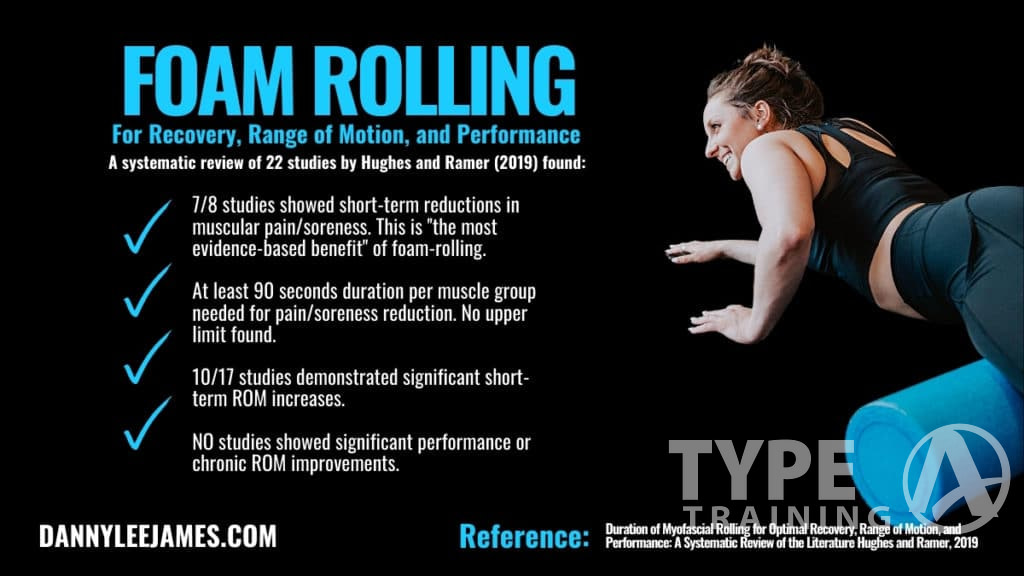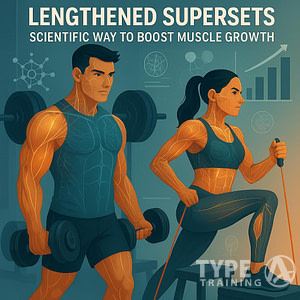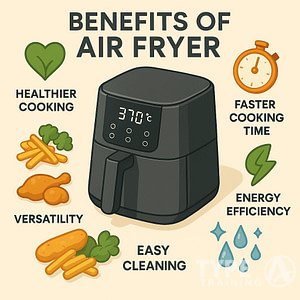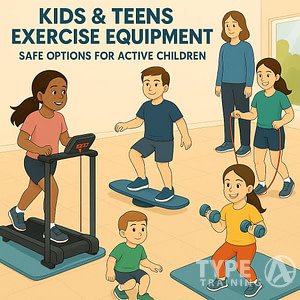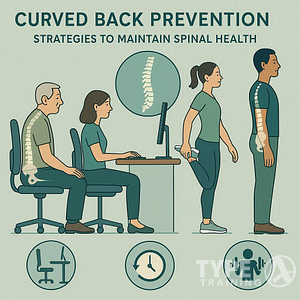Foam rolling is a popular technique used by many athletes and fitness enthusiasts to help relieve muscle tension and improve flexibility. However, it’s important to understand that there is a right and wrong way to foam roll. Doing it incorrectly can lead to injury or even make your muscle tension worse. As a personal trainer, I’ve seen many people make mistakes when foam rolling, so it’s important to learn the proper technique to get the most out of this practice.
Foam rolling is a form of self-myofascial release that targets the fascia, the connective tissue that surrounds your muscles, bones, and joints. By using a foam roller to apply pressure to these areas, you can help break up any knots or adhesions in the fascia, which can improve mobility and reduce pain. However, it’s important to use proper technique when foam rolling to avoid causing further damage to your muscles or fascia.
The key to effective foam rolling is to use slow, controlled movements and to focus on the areas that need the most attention. It’s also important to choose the right foam roller for your needs and to integrate foam rolling into your exercise regimen in a way that complements your other workouts. By following these guidelines, you can get the most out of your foam rolling practice and improve your overall fitness and flexibility.
Understanding Foam Rolling
Popular posts:
(Image credit: dannyleejames.com)
Foam rolling is a popular technique used by athletes, fitness enthusiasts, and personal trainers to relieve muscle tension, reduce soreness, and improve flexibility. Before delving into the right and wrong way to foam roll, it’s important to understand the basics of foam rolling.
Fascia and Its Role
Fascia is a thin layer of connective tissue that surrounds and supports your muscles, bones, and organs. It plays a crucial role in maintaining your body’s structural integrity and providing support during movement. When your fascia becomes tight or restricted, it can cause pain, discomfort, and reduced range of motion.
Myofascial Release
Myofascial release is a technique used to release tension and tightness in your fascia and muscles. It involves applying gentle pressure to specific areas of your body using a foam roller, massage ball, or other tools. This pressure helps to break up adhesions and knots in your fascia, improving circulation and promoting healing.
Self-Myofascial Release
Self-myofascial release is a form of myofascial release that you can do on your own, without the assistance of a massage therapist or other professional. Foam rolling is one of the most popular forms of self-myofascial release. By using your own body weight to apply pressure to specific areas of your body, you can release tension, reduce soreness, and improve flexibility.
Foam rolling is a simple and effective way to improve your mobility, reduce muscle tension, and prevent injuries. However, it’s important to use proper technique and avoid common mistakes to get the most out of your foam rolling sessions. In the next section, we’ll discuss the right and wrong way to foam roll.
The Importance of Proper Foam Rolling Technique
Foam rolling is an effective way to release muscle tension, improve mobility, and prevent injury. However, it is essential to use proper technique to get the most out of this self-massage tool. In this section, we will discuss the importance of proper foam rolling technique and how it can benefit your health and fitness goals.
Using a foam roller incorrectly can cause more harm than good. Applying too much pressure or rolling too quickly can cause muscle strain and injury. Therefore, it is crucial to use a foam roller with consistency and proper technique to achieve the best results.
Proper foam rolling technique involves applying sustained pressure to tender spots and trigger points in your muscles. Slow rolls over superficial layers of muscle tissue can help release muscle knots and adhesions, improve blood flow, and restore range of motion. By doing so, you can reduce inflammation, prevent muscle soreness, and speed up recovery time.
One of the primary benefits of foam rolling is myofascial release. Fascia is connective tissue that surrounds your muscles, bones, and joints. It can become tight and restrict movement, causing pain and tension imbalances. Foam rolling can help release this tension and improve flexibility, leading to better posture and performance.
Using a foam roller before a workout can also help warm up your muscles and prevent injury. By applying pressure to your muscles, you can increase blood flow and oxygen delivery to your muscle tissue, preparing it for exercise. This can also help prevent lower back pain, as well as IT band syndrome.
Foam rolling is not just for athletes or fitness enthusiasts. It can benefit anyone who experiences muscle tension or soreness, poor posture, or stress. Regular foam rolling can help improve your overall health and well-being, as well as prevent injury and improve recovery time.
The Benefits of Foam Rolling
Foam rolling is a simple and effective way to help your muscles recover faster, reduce soreness, and improve your overall athletic performance. In this section, we will discuss some of the key benefits of foam rolling, including muscle recovery and soreness relief, increased range of motion and flexibility, improved blood flow and circulation, and reduced stress and relaxation.
Muscle Recovery and Soreness Relief
After a workout, your muscles can become tight and sore. Foam rolling can help to alleviate this discomfort by increasing blood flow to the affected area and promoting muscle recovery. By rolling out your muscles, you can help to break up adhesions and knots, which can help to reduce soreness and speed up the recovery process.
Increased Range of Motion and Flexibility
Foam rolling can also help to increase your range of motion and flexibility. By working out the kinks and tightness in your muscles, you can improve your overall mobility and reduce your risk of injury. This can be especially beneficial for athletes who need to maintain a high level of flexibility and mobility in order to perform at their best.
Improved Blood Flow and Circulation
Foam rolling can help to improve blood flow and circulation throughout your body. This increased blood flow can help to deliver more oxygen and nutrients to your muscles, which can help to speed up the recovery process and improve your overall athletic performance. Additionally, foam rolling can help to reduce inflammation and promote healing in your muscles.
Reduced Stress and Relaxation
Finally, foam rolling can be a great way to reduce stress and promote relaxation. By taking the time to focus on your body and work out the kinks in your muscles, you can help to reduce tension and stress throughout your body. This can be especially beneficial for athletes who are under a lot of physical and mental stress.
Overall, foam rolling is a simple and effective way to improve your athletic performance and promote muscle recovery. By incorporating foam rolling into your regular workout routine, you can help to reduce soreness, increase flexibility, improve blood flow, and reduce stress and tension throughout your body.
Common Mistakes When Foam Rolling
Foam rolling is a great way to relieve muscle soreness, tightness, and discomfort, but it’s important to do it correctly to avoid bruising or aggravating adhesions. Here are some common mistakes to avoid when foam rolling:
Mistake 1: Rolling Too Fast
When you roll too fast, you don’t give your muscles enough time to release tension. Instead, slow down and take your time to focus on each muscle group.
Mistake 2: Rolling Directly on a Knot or Painful Area
Rolling directly on a knot or painful area can cause discomfort and even bruising. Instead, try rolling around the area and gradually increase pressure until you can tolerate rolling directly on it.
Mistake 3: Not Using Proper Form
Using proper form is crucial when foam rolling. Make sure to maintain a neutral spine, engage your core, and use your arms to control the movement.
Mistake 4: Spending Too Much Time on One Area
Spending too much time on one area can cause bruising and aggravate adhesions. Instead, spend no more than 60 seconds on each muscle group and move on to the next.
Mistake 5: Not Gradually Increasing Pressure
Not gradually increasing pressure can cause discomfort and bruising. Instead, start with light pressure and gradually increase it as your muscles release tension.
By avoiding these common mistakes, you can ensure that your foam rolling sessions are effective and safe.
The Right Way to Foam Roll
Foam rolling is an effective way to reduce muscle tension, recover faster, and increase flexibility. However, it’s important to do it correctly to avoid injuries and achieve the best results. Follow these steps to foam roll the right way:
Step 1: Warm Up
Before you start foam rolling, warm up your muscles with some light cardio exercises or dynamic stretches. This will increase blood flow to your muscles and make them more pliable, which will help you get the most out of your foam rolling session.
Step 2: Identify Your Target Areas
Identify the muscle groups that are tight or tender. Common areas to foam roll include the calves, hip flexors, lats, and shoulders. If you’re not sure which areas to target, consider consulting with a professional physical therapist or personal trainer.
Step 3: Use Proper Form
When foam rolling, use proper form to avoid injury. Maintain good posture and engage your core to protect your lower back. Roll slowly and methodically, focusing on the muscle tissue rather than the bone. Use sustained pressure on tender spots, but avoid rolling over internal organs or bones.
Step 4: Gradually Increase Pressure
Start with a soft foam roller and gradually increase the firmness as your muscles adapt. This will help prevent muscle strain and allow you to sustain pressure on tender spots.
Step 5: Roll Slowly and Methodically
Roll slowly and methodically, focusing on the superficial layers of the soft tissues. Avoid fast, jerky movements or rolling over joints. If you find a tender spot, spend a few extra seconds rolling over that area.
Step 6: Spend 30-60 Seconds on Each Area
Spend 30-60 seconds rolling over each muscle group. This will help release tension and increase blood flow to the area. If you have a particularly tight muscle group, you may want to spend more time on that area.
Step 7: Breathe and Relax
Finally, breathe deeply and relax while foam rolling. This will help you release tension and achieve a deeper stretch. If you experience any pain or discomfort, stop and consult with a professional.
By following these steps, you can foam roll effectively and safely. Incorporate foam rolling into your warm-up or recovery routine to improve your flexibility and reduce muscle tension.
Integrating Foam Rolling into Your Exercise Regimen
Foam rolling is an excellent way to improve flexibility, reduce muscle soreness, and prevent injury. Here are some tips on how to integrate foam rolling into your exercise regimen.
Warm-Up and Cool-Down Sessions
Foam rolling can be done before or after a workout. If you choose to foam roll before your workout, it should be part of your warm-up routine. Foam rolling before exercise can help increase blood flow to the muscles and prepare them for the upcoming workout.
On the other hand, foam rolling after exercise can help reduce muscle soreness and prevent injury. It’s an excellent way to cool down and relax your muscles after an intense workout.
Addressing Desk-Related Posture Issues
If you spend a lot of time sitting at a desk, you may develop poor posture. Foam rolling can help address some of the issues related to desk work, such as tightness in the hips, lower back, and shoulders.
To address tight hips, place the foam roller under your glutes and roll back and forth. For tight lower back muscles, lie on your back with the foam roller under your lower back and roll up and down. To address tight shoulders, lie on your side with the foam roller under your armpit and roll up and down.
Foam Rolling for Runners and Athletes
Foam rolling is particularly beneficial for runners and athletes. It can help improve flexibility, reduce muscle soreness, and prevent injury.
To foam roll your legs as a runner, place the foam roller under your calf and roll up and down. For your quads, lie face down with the foam roller under your thighs and roll up and down. To address tightness in your IT band, lie on your side with the foam roller under your hip and roll up and down.
As an athlete, foam rolling can help you recover faster and prevent injury. Use the foam roller to target the muscles you use most during your sport.
Remember to always start slowly and gradually increase the intensity and duration of your foam rolling sessions. If you experience any pain or discomfort, stop immediately and consult with a personal trainer or healthcare professional.
Choosing the Right Foam Roller
Foam rolling is a great way to relieve muscle tension and improve mobility, but choosing the right foam roller can make a big difference in your experience. Here are some factors to consider when choosing a foam roller:
Sizes and Shapes
Foam rollers come in different sizes and shapes, each with its own benefits. The most common shape is the cylinder-shaped foam roller, which is great for most muscle groups. However, if you’re looking to target specific areas, you might want to consider a smaller foam roller or one with a different shape.
Here are some common foam roller sizes and their uses:
- 36-inch foam roller: good for full-body rolling and larger muscle groups
- 18-inch foam roller: great for travel or targeting specific muscle groups
- Half-round foam roller: good for balance exercises and stretching
- Massage ball: great for targeting small, hard-to-reach areas
Materials and Firmness
Foam rollers come in different materials and firmness levels. The material affects the durability and texture of the foam roller, while the firmness affects how deep the massage will be.
Here are some common foam roller materials and firmness levels:
- EVA foam: durable and lightweight, with a medium firmness
- Polyethylene foam: more durable than EVA foam, with a high firmness
- PVC foam: less durable than EVA or polyethylene foam, with a low firmness
When it comes to firmness, it’s important to choose a foam roller that is appropriate for your needs. A softer foam roller is great for beginners or those with sensitive muscles, while a firmer foam roller is better for experienced users or those with larger muscles.
Remember, choosing the right foam roller is important for getting the most out of your foam rolling experience. Take the time to consider your needs and preferences when selecting a foam roller.
Conclusion
In conclusion, foam rolling is an effective way to improve your mobility, flexibility, and muscle recovery. However, it’s important to do it correctly to avoid injury and get the most out of your foam rolling sessions. Here’s a recap of the key points to keep in mind:
- Position yourself correctly on the foam roller and maintain proper form.
- Use slow, controlled movements and avoid rolling too quickly or aggressively.
- Focus on the areas that are tight or sore, but don’t neglect other muscle groups.
- Foam roll before and after your workout to warm up and cool down your muscles.
If you’re unsure about how to foam roll correctly, or if you have any pre-existing injuries or medical conditions, it’s always a good idea to seek professional advice from a personal trainer or physical therapist. They can provide you with personalized guidance and help you avoid any potential risks or complications.
With that said, don’t be afraid to start incorporating foam rolling into your training sessions. It’s a simple yet effective way to improve your overall fitness and well-being. So grab a foam roller, find a comfortable spot, and start rolling your way to a healthier, happier you!
Frequently Asked Questions
What are some common foam rolling mistakes?
Foam rolling can be a great way to stretch and soothe your muscles after a workout, but it’s important to do it correctly to avoid injury. Some common foam rolling mistakes include rolling too quickly, applying too much pressure, and rolling over joints or bones. It’s also important to avoid rolling over an area that is injured or inflamed.
How often should you foam roll?
The frequency of foam rolling depends on your individual needs and goals. Some people may benefit from foam rolling every day, while others may only need to do it a few times a week. It’s important to listen to your body and adjust your foam rolling routine accordingly.
What are the benefits of foam rolling?
Foam rolling can have many benefits, including improving flexibility, reducing muscle soreness and tension, increasing blood flow, and promoting relaxation. It can also help prevent injury and improve overall athletic performance.
Can foam rolling help with muscle soreness?
Yes, foam rolling can be an effective way to alleviate muscle soreness and tension. By applying pressure to specific areas, foam rolling can help release knots and trigger points in your muscles, providing relief and promoting healing.
What is the proper way to use a foam roller?
To use a foam roller properly, start by placing the roller on the floor and lying on top of it with the area you want to target facing down. Slowly roll back and forth over the area, applying gentle pressure and avoiding any bones or joints. If you find a particularly tender spot, pause and hold the pressure for 20-30 seconds before continuing.
Are there any precautions to take while foam rolling?
Yes, there are some precautions to take while foam rolling to avoid injury. It’s important to avoid rolling over bones or joints, and to avoid applying too much pressure. If you have an injury or inflamed area, it’s best to avoid foam rolling that area until it has healed. Additionally, if you experience any pain or discomfort while foam rolling, stop immediately and consult a healthcare professional.

